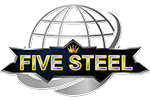Mostly, building frames and panel designs are very important in curtain wall construction, as they need to perform multiple functions:
•Transferring loads back to the primary structure of the building;
•Providing thermal insulation as well as avoiding cold bridging and condensation;
•Providing fire, smoke and acoustic separation, which is particularly more difficult at joints between the curtain wall system and interior walls and floors;
•Creating a barrier to water penetration;
•Accommodating differential movement and deflection;
•Preventing panels from falling out of the frame;
•Allowing for opening windows;
•Preventing the accumulation of dirt;
As a rule, panels are often composites, with the facing materials bonded to, or 'sandwiching' an insulated core such as polyethylene (PE) or polyurethane (PUR), a profiled metal core or a mineral core. There are a wide range of possible infill panels for curtain wall systems, including:
•Vision glass (which may be double or triple glazed, may include low-e coatings, reflective coatings and etc.)
•Spandrel (non-vision) glass
•Aluminium or other metals
•Stone or brick veneer
•Terracotta
•Fibre-reinforced plastic (FRP)
•Louvres or vents
Metal composite panels or metal composite materials-MCM are typically used in the external cladding of buildings. They can be bent, curved and joined together in an almost unlimited range of configurations, making them popular with architects and engineers of complex structures. They first emerged commercially in the 1960's and are now frequently used as a wall cladding, in cornices and canopies, and for joining areas between other building materials such as glass and precast panels. In general, two metal skins can be bonded an insulating core, forming a composite ‘sandwich’ panel for curtain wall facade systems. In the current market, there various types of metal materials for choice, such as aluminium, zinc, stainless steel, titanium and so on, available in a wide variety of colours, finishes and profiles. The core may be manufactured from an insulating material such as polyethylene or from a fire-retardant material, with a range of thicknesses available depending on performance requirements.
In addition, metal composite panel has a number of advantages compared to single-layer metal sheeting, including:
•Weather resistance
•Acoustic insulation
•Thermal insulation
•A consistency of finish that requires little maintenance
•Not wrinkle as the external skins are bonded to the core under tension
•Lightweight
Nowadays, with further improvements in manufacturing technology and installation techniques, metal composite panels have become very popular and even affordable compared to other types of curtain wall panels in the market. They can be more cost-effective and can be installed faster than precast panels, granite or brick exteriors, and have reduced structural support requirements because of their lighter weight.
Send your message to us:
Post time: Apr-18-2022




